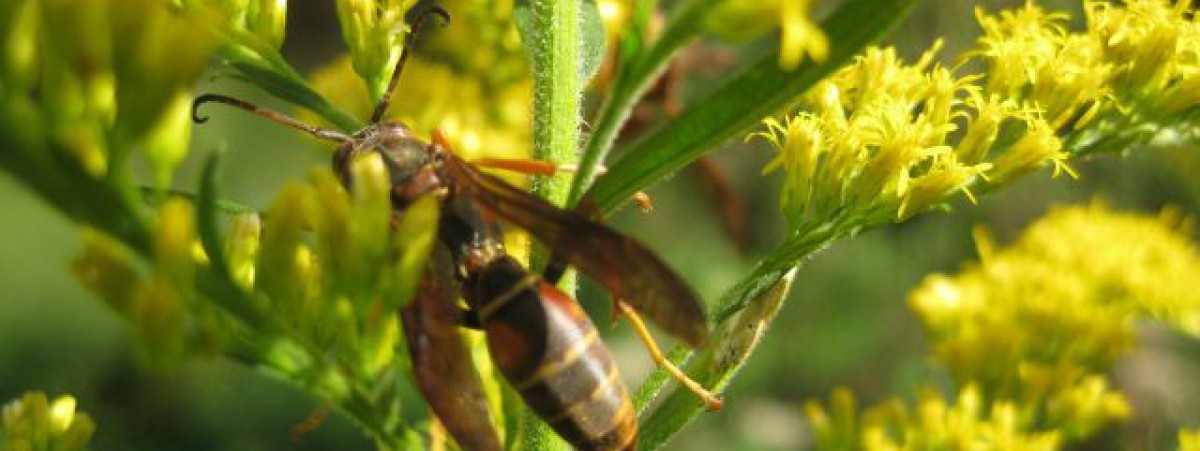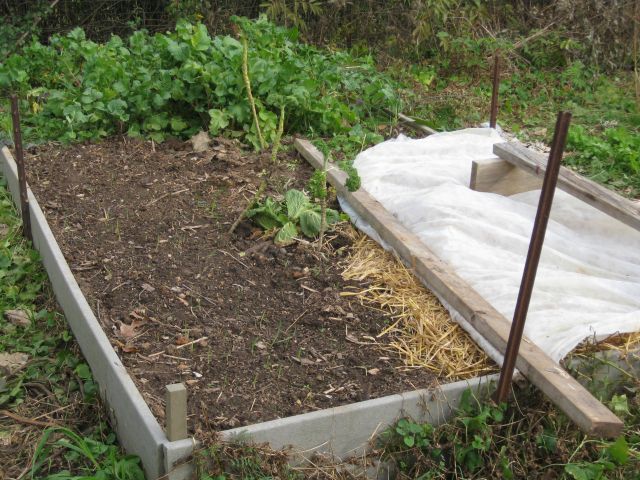As the months and seasons roll by and I learn what works and doesn’t, I change my practices. For me, raised beds work best. I produce mainly for my family and the area under cultivation is about 1/4 acre and worked by hand (my hands). For this situation raised beds are optimum – they drain better, they resist weed invasion better, easier to work (less stooping) and warm up quicker in the winter. I have 8 beds now – mostly 8 or 10 ft by 4 ft, though I just installed a 20ft by 4ft addition.
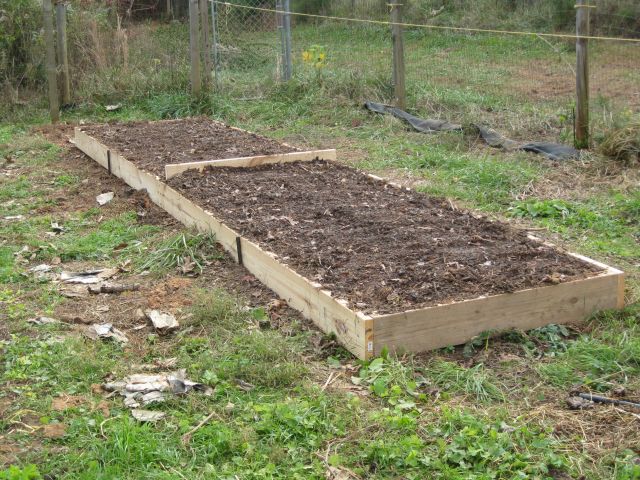
For this bed I used 10ft by 10″ untreated planks screwed together at the corners and in the middle a left over 4ft by 12″ wood with steel stakes in the middle of each of the 10ft lengths. I filled the bed 80% with soil from a contour ditch which I had mixed with wood chips a couple years ago, and the balance with my compost plus liberal scoops of lime. I sowed one half with white ladino clover and the other with crimson clover. I should have done all this a few weeks ago and not just before our first big winter storm, but I was delayed with more pressing tasks. Hope my winter cover will germinate and then late spring I will cut and plant out edibles. The yellow raised line to the right of the beds is my deer dissuader – it is supposed to make a simple hop over the fence a complicated maneuver (and to date I have not had any deer visits).
My most productive bed this season was this 4ft by 4ft which is not well sun exposed. As I cleared the tomato, cucumber and squash vines I saw and remembered how this was different from the others – when I first filled the bed I used about 50% (at least) compost and this made the difference. For an organic grower it is all about the compost.
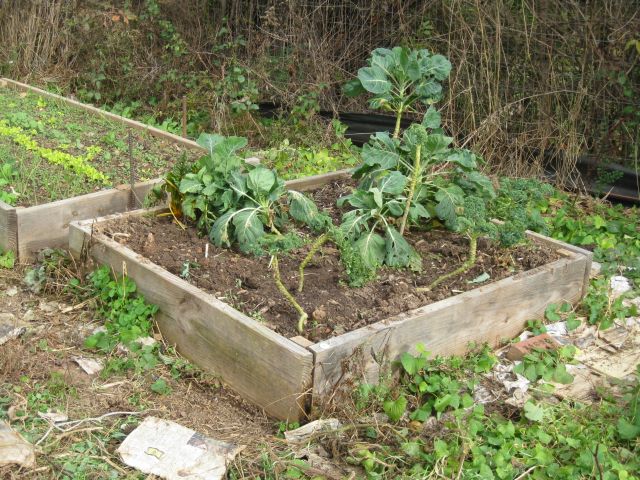
I have cleared and recomposted most of my beds and sowed cool season vegetables and will use row covers if it gets very cold. My favorite planting is garlic – from a few organic heads purchased a few years ago I now produce sufficient garlic for use throughout the year plus lots of cloves for planting in the fall. Here is a typical bed going into winter.
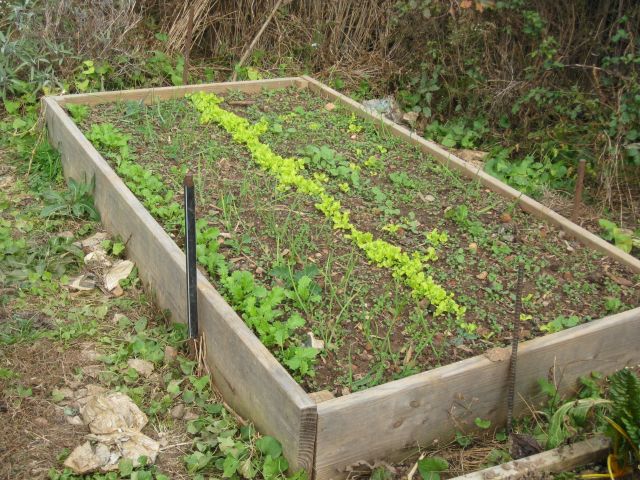
I still plant directly into the soil and here is mustard growing well – I just scattered the seed, they took off, and now I haircut the leaves as needed and they grow back quickly.
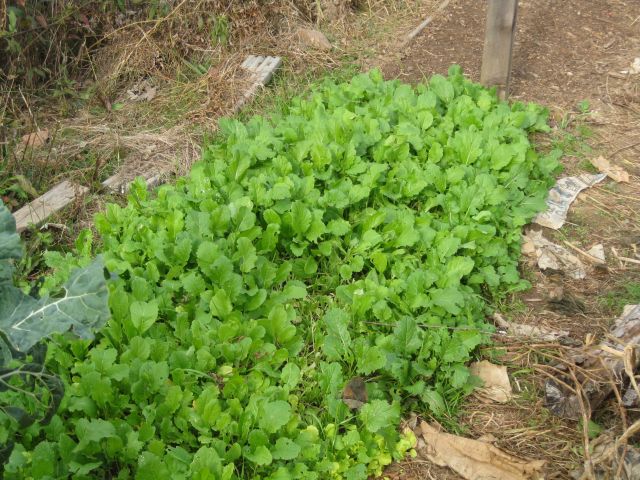
Previously I built elaborate above ground cold frames – which worked but were a bit clumsy. I will take my chances this year (I do believe the climate is warming) and make do with row covers except for some delicate herbs – rosemary, oregano and parsley for which I made a very simple, sun exposed cold frame. It is not airtight which means the plants will not overheat on warm days but how will they do on the cold days?
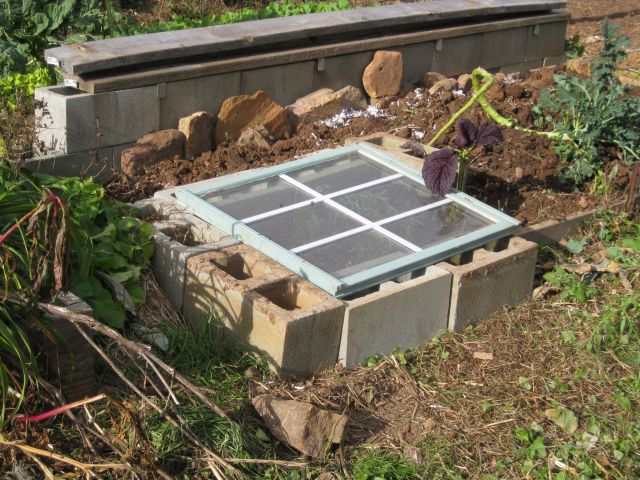
Another change I made was hand watering my vegetables with a hose – I still use bubbler irrigation for the two orchards. (All water used is rainwater collected from various locations and pumped to large storage tanks and then to smaller elevated tanks for gravity fed irrigation). Now I have my feed tanks at the top of the hill the psi is sufficient to enable quick watering. When I began growing, I did not own the hill and my gravity fed system produced only a slow flow and I used bubblers for everything. Hand watering is quick and I can see what is going on – where pests are developing, where diseases, what needs more and what needs less watering. I use a 3/4″ hose which can be spotted in this pic of my collard bed where the collard is growing well – it tolerated the Georgia heat well, now to see how it does in the winter.
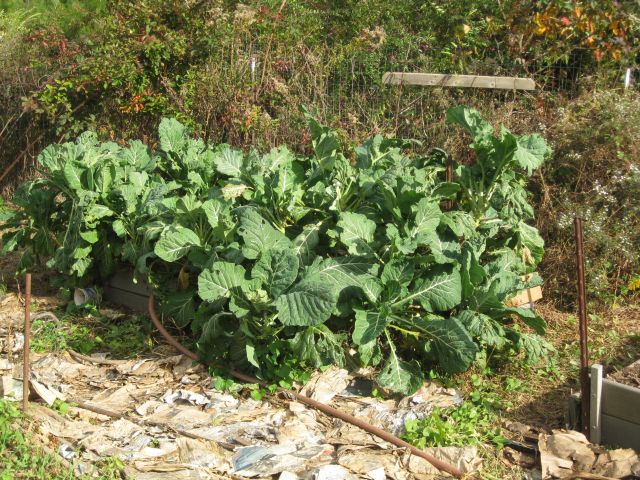
My first attempt with sweet potato was middlin – they tasted fine but not a big crop. After harvesting, I buried the vines in close proximity in a raised bed and with freezing temps just a few hours away I covered them today with hay and placed a doubled row cover on top. Hopefully they will make it through the winter and I will plant them out earlier next year and should do much better. You can also see in the rest of the bed some fine garlic heads and radish at the end.
- an experiment with sweet potato stalks covered with hay and row cover
And finally my compost – I have a lot left over and will contribute it to my fruit trees. I had lots of apples this year (with lots of invaders as well) and my goal next year is to minimize the pests and good nutrition from good compost is a good starting point.
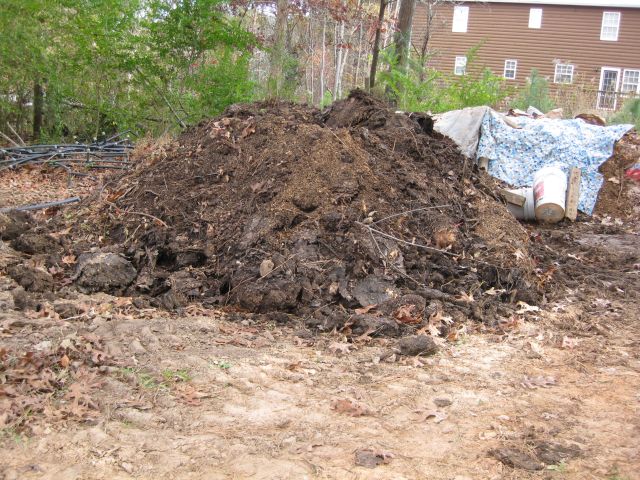
The closest heap was begun last fall with leaf bags. Behind the heap you can see the second heap gathering – it already has 36 leaf bags from neighbors and 2 truckloads from the stables plus cleared vegetation.
